What is response blocking in ABA
Understanding the Role of Response Blocking in Behavior Intervention

Introduction to Response Blocking in ABA
Response blocking is a key component within Applied Behavior Analysis (ABA) designed to manage and reduce problematic behaviors. This intervention involves physically preventing a person from engaging in specific maladaptive behaviors, such as self-injury or elopement, by intervening as soon as the behavior begins. The purpose of response blocking is not only to decrease harmful or disruptive behaviors but also to facilitate the acquisition of more adaptive responses. This technique is frequently applied with individuals exhibiting behaviors maintained by automatic reinforcement or escape, providing immediate interruption that helps modify behaviors through careful and ethical application.
What is Response Blocking in ABA?
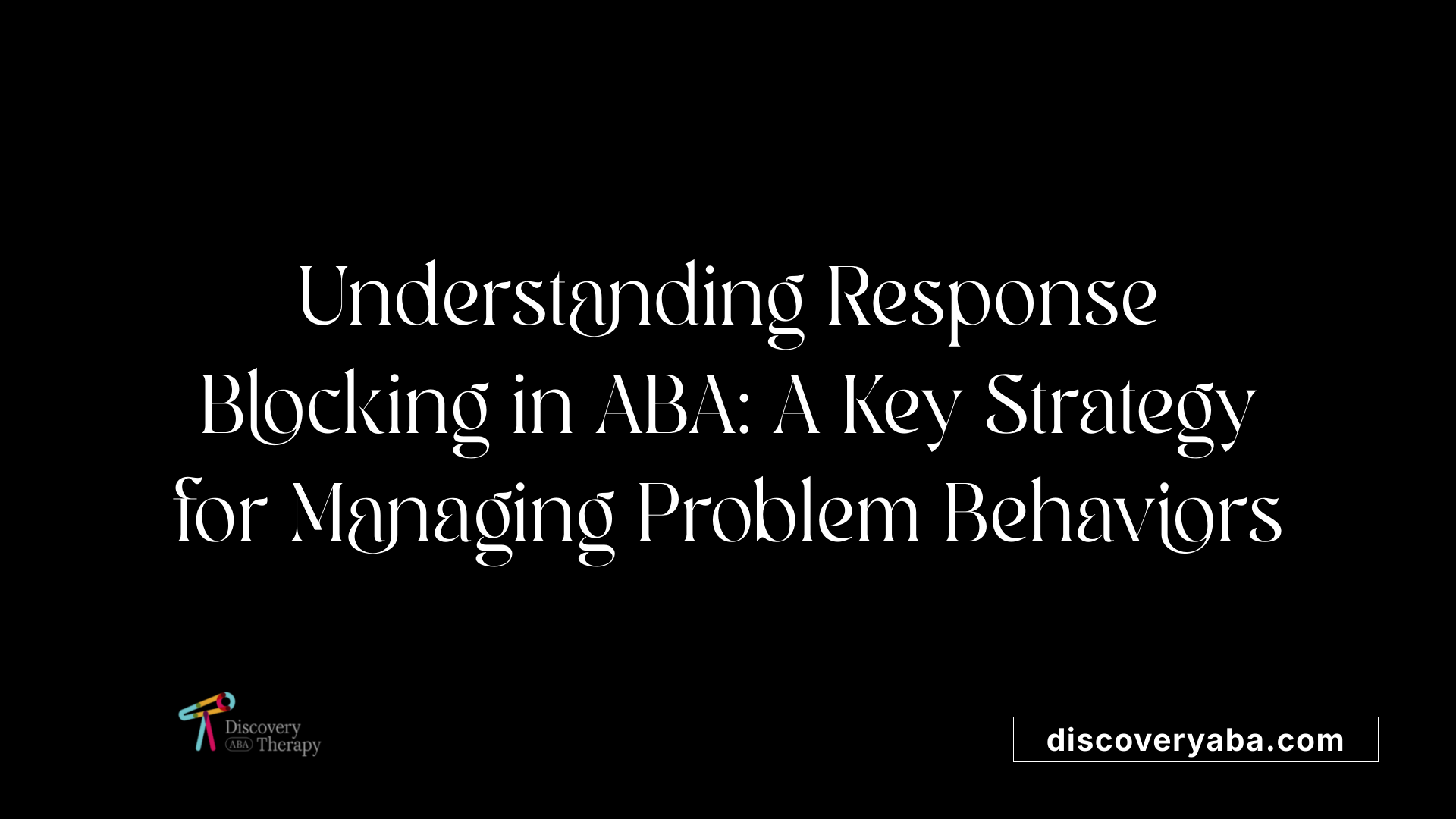
What is response blocking in ABA?
Response blocking in Applied Behavior Analysis (ABA) is a technique used to immediately stop a problematic behavior by physically intervening to prevent its completion. Usually performed by a trained therapist or caregiver, this method involves placing a hand or another form of support near the individual to interrupt behaviors like head hitting, biting, or throwing objects.
This intervention is mainly employed to reduce behaviors that are dangerous or self-injurious, especially those maintained by automatic reinforcement or escape from tasks. The primary goal is to make the problem behavior ineffective for obtaining reinforcement, which discourages its recurrence over time. For example, if a child hits their head repeatedly, the therapist may physically block this action as soon as it begins.
How response blocking is implemented
The implementation of response blocking involves several steps to ensure safety and effectiveness. First, the behavior is clearly defined and monitored through baseline data collection. The therapist must accurately observe when the behavior starts and decide if response blocking is appropriate.
In practice, response blocking usually requires the least physical contact necessary to prevent the behavior. It can involve holding or repositioning the individual’s limbs or body part, often combined with verbal feedback or redirection. For young children or those with less aggressive behaviors, hand-over-hand guidance or gentle physical prompts are effective to ensure task completion while preventing escape behaviors.
During the intervention, the therapist continuously monitors the behavior, applies blocking as soon as the behavior occurs, and records the frequency and context of the behavior. Over time, response blocking is gradually faded by reducing physical contact, aiming to transition to verbal cues, self-control, or less intrusive methods.
Behavior targeted by response blocking
Response blocking is primarily used to address behaviors that pose safety risks or are highly disruptive. These include self-injury such as head hitting, biting, or pinching; aggression toward others like hitting or kicking; mouthing inappropriate objects; pica (ingestion of non-food items); and tantrums involving throwing objects or loud outbursts.
Often, these behaviors are maintained by automatic reinforcement, where the individual’s sensory experiences reinforce the behavior, or escape from demands and tasks. Response blocking aims to prevent these behaviors from providing the typically sought-after outcomes, thus reducing their frequency and severity.
When combined with other techniques such as stimulus re-presentation or teaching alternative, functional behaviors, response blocking becomes an effective component of comprehensive behavior intervention plans. It also plays a protective role in ensuring safety, especially during episodes of high-frequency or dangerous behaviors.
Goals and Purposes of Response Blocking
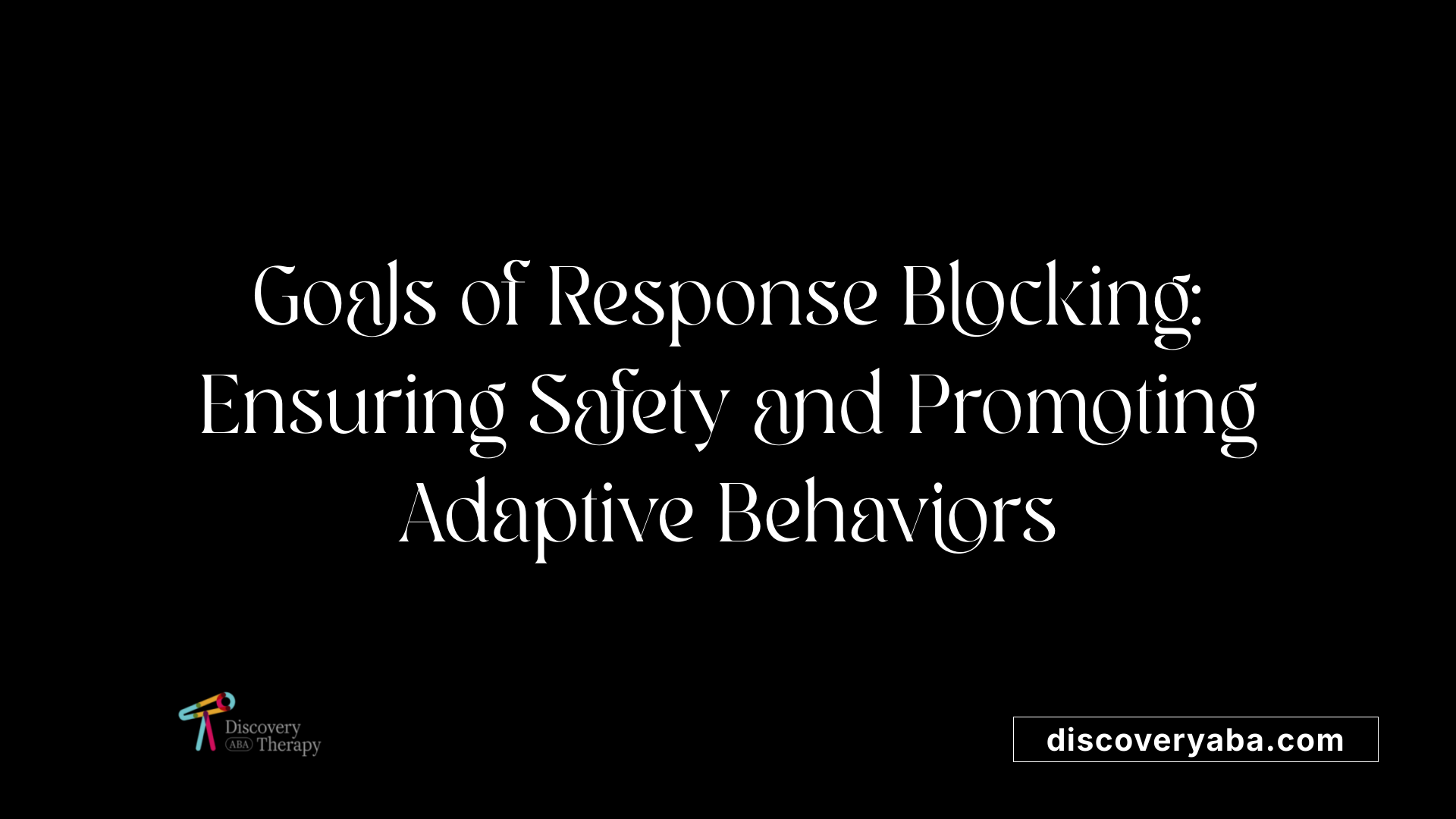 What are the purposes and goals of response blocking in ABA?
What are the purposes and goals of response blocking in ABA?
The primary goal of response blocking in ABA is to prevent the occurrence of problematic behaviors, particularly those that can cause harm or are socially disruptive. By physically intervening at the moment a behavior begins, the technique effectively stops the behavior from completing, which limits the reinforcement that the behavior might otherwise access. This helps reduce the frequency of undesirable behaviors such as self-injury, aggression, or escape-maintained actions.
Response blocking is often used alongside other ABA strategies. For instance, during competing stimulus assessments (CSAs), it can be combined with the presentation of alternative stimuli or activities to see if behaviors like escape or hand-mouthing decrease. This combined approach not only discourages problematic behaviors but also helps assess what environmental factors influence them.
Furthermore, response blocking plays a role in establishing safer patterns of behavior, preventing injury, and providing a window to teach and reinforce more appropriate alternative behaviors. When used consistently and ethically, with attention to minimum necessary contact, it can effectively decrease harmful responses.
Overall, the main aims are to diminish problematic behaviors by making them ineffective at achieving reinforcement and to support the development of functional, socially acceptable behaviors within an individualized treatment plan.
Techniques and Procedures in Response Blocking
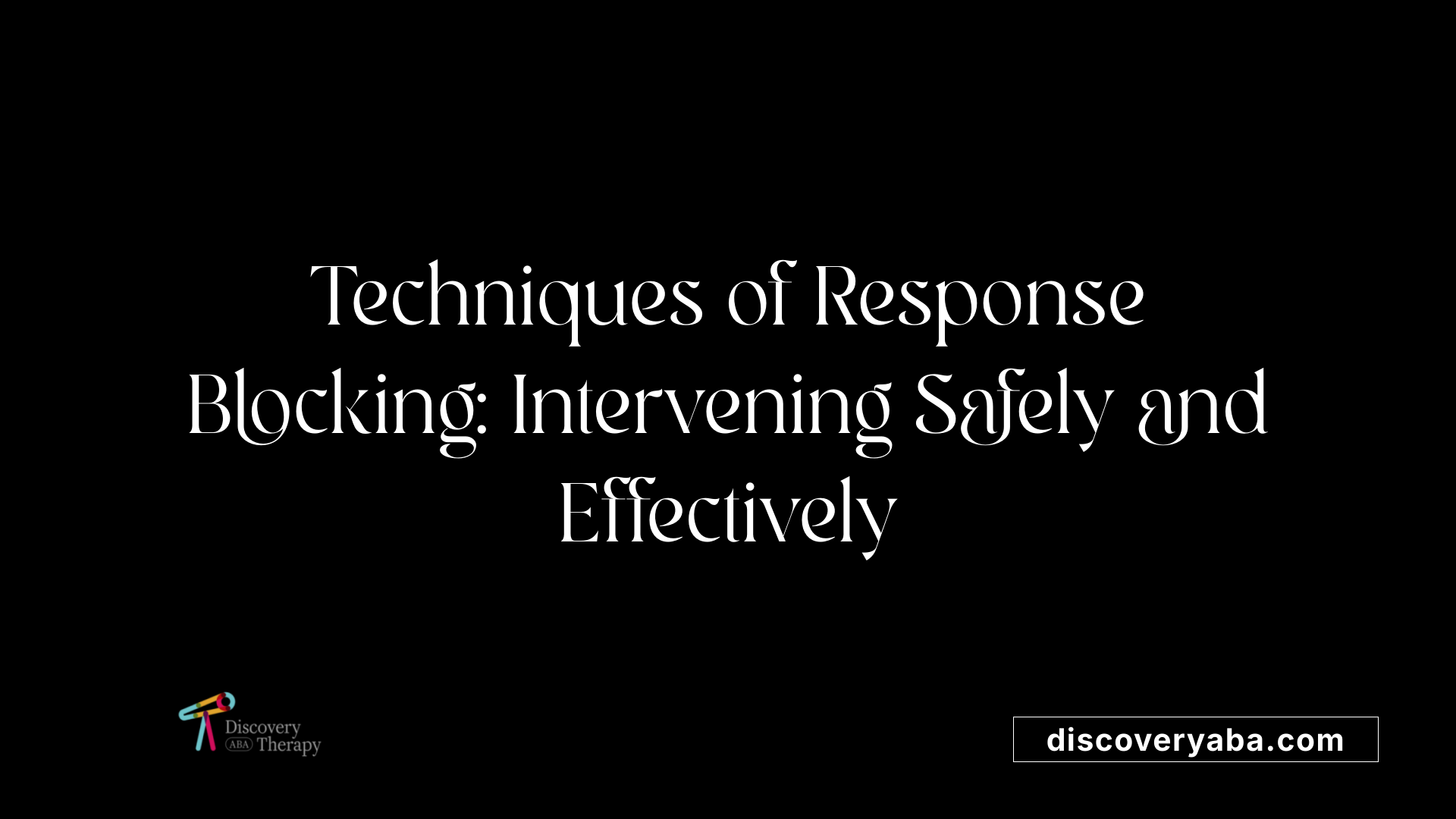
What techniques are involved in response blocking in ABA?
Response blocking in Applied Behavior Analysis (ABA) involves physically intervening to prevent the occurrence of problematic behaviors. Typically, this includes a therapist or caregiver placing their hand or arm near the child's head, face, or limbs to interrupt behaviors such as head hitting, biting, or self-injury before they fully occur. The physical contact should be minimal but effective, employing the least amount of force necessary to stop the behavior.
This method is often paired with other strategies to increase its efficacy. One common approach is stimulus re-presentation, where the therapist presents an alternative stimulus or activity after blocking the maladaptive behavior. This helps promote adaptive responses and reduces the likelihood of the problem behavior recurring.
Consistent application of response blocking during sessions is essential for safety and effectiveness. Therapists are trained to ensure that interventions are safe, avoiding injury or undue distress. Moreover, response blocking is usually integrated within a broader behavior intervention plan that includes other reinforcement or extinction procedures.
Research supports the combined use of response blocking with stimulus re-presentation, demonstrating significant reductions in behaviors such as self-injurious actions (SIB). It is especially effective when aimed at behaviors maintained automatically, such as sensory seeking or escaping from tasks.
Overall, the success of response blocking depends on careful planning, consistent implementation, and concurrent strategies that promote the development of functional, adaptive behaviors.
Application of Response Blocking in Behavior Management

How is response blocking used in behavior management?
Response blocking is a technique widely used to manage problematic behaviors in children and individuals with developmental disorders. It involves a caregiver or therapist physically intervening immediately when a maladaptive behavior begins, preventing its completion. This interruption stops the behavior from contacting its reinforcement, such as escaping a task or getting attention through aggression.
The primary goal of response blocking is to reduce behaviors like self-injury, aggression, or mouthing, which can pose safety risks. The intervention is especially useful for behaviors maintained by automatic reinforcement or sensory input, where the behavior automatically provides relief or stimulation.
Unlike extinction, which relies on withholding reinforcement over time, response blocking offers a more direct and immediate method to prevent dangerous behaviors. It can be implemented alongside other strategies such as redirection to more appropriate activities or teaching alternative, functional skills.
While effective, response blocking requires careful application. It should be administered with the least amount of physical contact necessary to ensure safety and minimize discomfort. Ongoing data collection helps monitor progress and inform when fading techniques—gradually reducing physical intervention—are appropriate.
This method is often used by trained professionals and caregivers for behaviors like head hitting, biting, and tantrums, especially when these behaviors occur frequently or pose risks of injury. Proper training and consistent application are essential to maximize benefits and reduce potential negative effects, such as increased aggression or frustration.
Benefits, Ethical Considerations, and Limitations
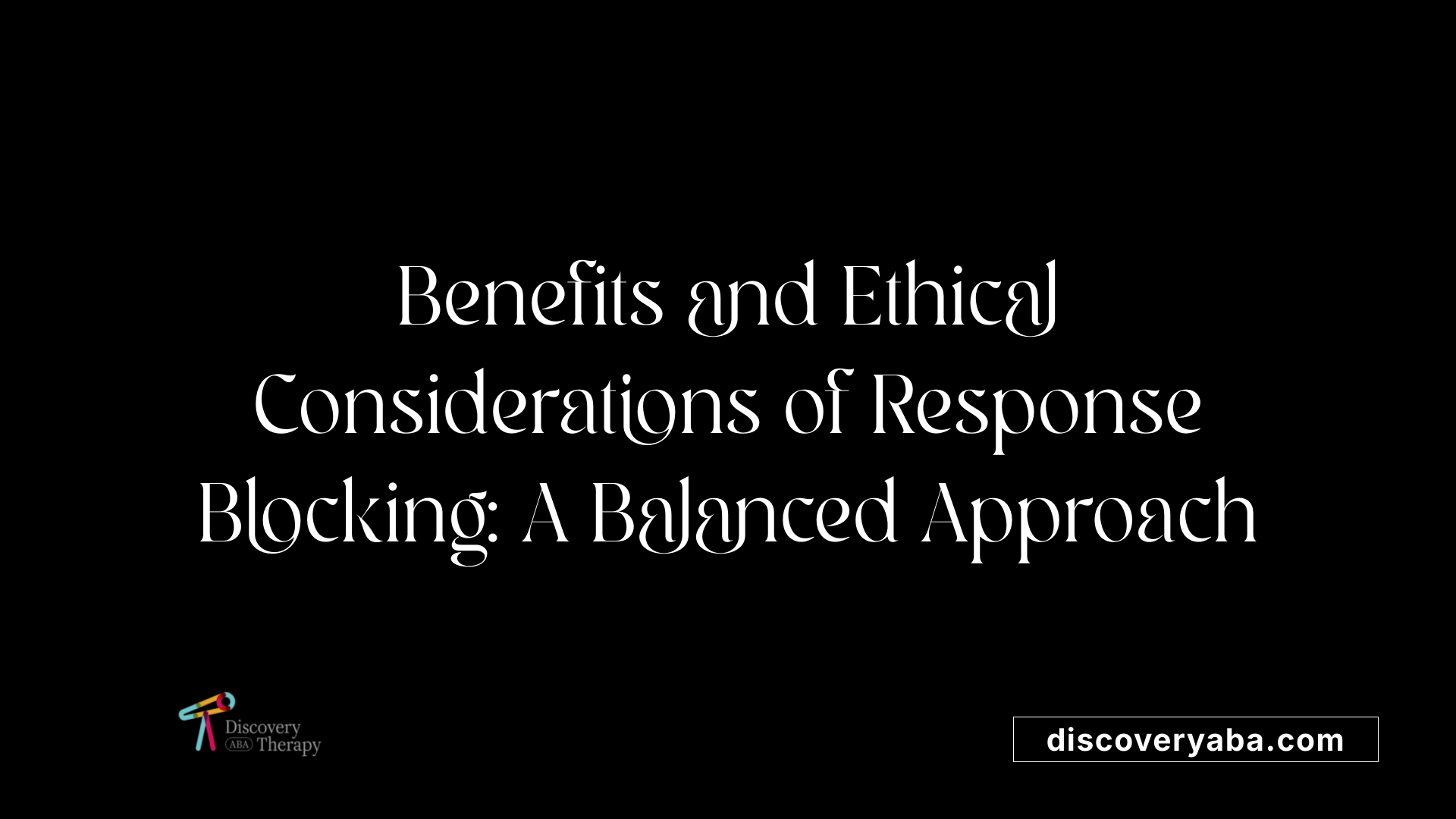
What are the benefits and considerations when using response blocking?
Response blocking provides immediate and noticeable benefits, especially in reducing dangerous or highly disruptive behaviors such as self-injury, aggression, or pica. By physically intervening at the moment the problematic behavior starts, it prevents the behavior from reaching a state where harm could occur.
This technique also plays a crucial role in encouraging the development of alternative, more appropriate behaviors. When maladaptive behaviors are blocked, individuals often learn to engage in safer, functional responses. Alongside other assessment tools, like the competing stimulus assessment (CSA), response blocking can effectively limit the reinforcement that maintains or escalates problematic behaviors.
Additionally, response blocking is useful in designing individualized interventions within ABA, supporting safer environments and fostering positive growth.
However, applying this method requires careful ethical considerations. It should always be used as a part of a comprehensive plan that emphasizes the least restrictive and least intrusive approaches. Ensuring the individual’s dignity and safety is paramount.
Proper training for caregivers and staff is essential to implement response blocking correctly and sensitively. Training includes defining target behaviors clearly, applying physical intervention ethically, and understanding when and how to reduce or fade the intervention.
An important aspect of responsible use is ongoing data collection: tracking behaviors before, during, and after response blocking helps determine its effectiveness and whether adjustments are needed. This continuous evaluation supports ethical practice by preventing prolonged or unnecessary use of physical interventions.
In conclusion, while response blocking can be highly effective in reducing harmful behaviors, it must be used thoughtfully, with careful attention to individual needs, ongoing data review, and adherence to ethical standards to ensure positive and safe outcomes.
Comparison of Response Blocking with Other Interventions and Its Position in ABA
How does response blocking differ from other behavioral interventions like extinction or differential reinforcement?
Response blocking actively prevents a problematic behavior from occurring by intervening at the moment it's about to happen, often using physical contact. This makes the behavior ineffective, reducing its likelihood over time. Conversely, extinction involves withholding reinforcement after the behavior occurs, leading to its decrease through lack of reward. Differential reinforcement, on the other hand, rewards alternative, more appropriate behaviors to replace the problematic one.
Response blocking is often combined with teaching functional communication skills, such as requesting a break. It is especially suitable for younger students or those with less aggression, where physical intervention can be performed safely. In complex treatment plans, it can be used alongside other strategies, like stimulus re-presentation or reinforcement attenuation, to optimize results.
While extinction and differential reinforcement modify reinforcement contingencies, response blocking provides immediate interruption of behaviors as they happen, making it a proactive component in behavior reduction.
Where does response blocking fit within ABA treatment strategies?
Response blocking is a targeted technique used within ABA to address behaviors maintained by automatic reinforcement, including self-injury and pica. By physically preventing the behavior, therapists can reduce its frequency effectively. It is typically applied by trained professionals who intervene as soon as the behavior starts, using hands, objects, or other barriers.
This technique is integrated with reinforcement of functional alternative behaviors and environmental modifications. Its success depends on proper timing, consistency, and understanding of the individual’s specific behavior patterns. As a part of a comprehensive intervention, response blocking helps manage dangerous behaviors and supports the development of safer, more adaptive responses.
Is response blocking considered positive or negative punishment in ABA?
Response blocking is generally regarded as a form of positive punishment because it introduces an intervention—physical contact or a barrier—to immediately prevent a behavior. This prevents reinforcement from contact, encouraging a reduction in problematic actions like self-injury.
Though it involves physical intervention, the primary goal is immediate interruption and redirection, aligning with positive punishment principles. It is vital to ensure its application is minimal, appropriate, and ethically justified, especially in cases involving safety concerns.
Can response blocking be used for specific behaviors like elopement?
Yes, response blocking can be utilized to address behaviors such as elopement. When a child attempts to run away from a designated area, a therapist or caregiver can physically prevent or redirect this action. Research supports its effectiveness, especially when paired with reinforcement of appropriate alternative behaviors.
Blocking reduces the likelihood of escape behaviors maintained by automatic reinforcement or access to preferred stimuli. However, implementation may vary based on environmental constraints and individual needs, and in some cases, other strategies like functional communication training may complement or replace blocking.
What is the difference between response blocking and response cost in ABA?
Response blocking proactively prevents a behavior from occurring, focusing on immediate physical or prompt intervention to stop the behavior at its onset. Response cost is a reactive procedure where a positive reinforcer or privilege is removed after a problematic behavior happens to decrease its future occurrence.
While response blocking seeks to interrupt behavior before it results in reinforcement, response cost diminishes the value of reinforcement after the fact. Both aim to reduce problematic behaviors but operate at different points—blocking is preventive, and response cost is consequence-based. Selection depends on the behavior's nature and safety considerations.
Conclusion: The Strategic Use of Response Blocking in ABA
Response blocking is a vital, though sometimes ethically sensitive, intervention in ABA aimed at reducing severe or dangerous behaviors. When implemented carefully and ethically, it not only prevents harmful actions such as self-injury or elopement but also provides a foundation for teaching alternative, functional behaviors. Its role within a comprehensive ABA framework involves precise timing, consistent application, and ongoing data collection. As with all behavior interventions, response blocking should be part of a balanced plan that emphasizes least restrictive methods, caregiver training, and fading strategies to ensure safety, dignity, and maximal progress in behavior management.
References
- Response block - Pass the Big ABA Exam Glossary
- Escape Behaviors {Response Blocking & Other Tips}
- EVALUATION OF RESPONSE BLOCKING AND RE ...
- Response Blocking - Fitting the Puzzle - Weebly
- Sage Reference - Response Blocking
- Response Block Techniques in ABA Therapy
- Response Blocking | PDF | Reinforcement | Behavior - Scribd
- EVALUATION OF RESPONSE BLOCKING AND RE ...
- Escape Behaviors {Response Blocking & Other Tips}
- EVALUATION OF RESPONSE BLOCKING AND RE ...
Does Your Child Have An Autism Diagnosis?
Learn More About How ABA Therapy Can Help
Find More Articles
Contact us
North Carolina, Tennessee, Nevada, New Jersey, Utah, Virginia
New Hampshire, Maine
Massachusetts, Indiana, Arizona, Georgia
.avif)













.jpeg)





















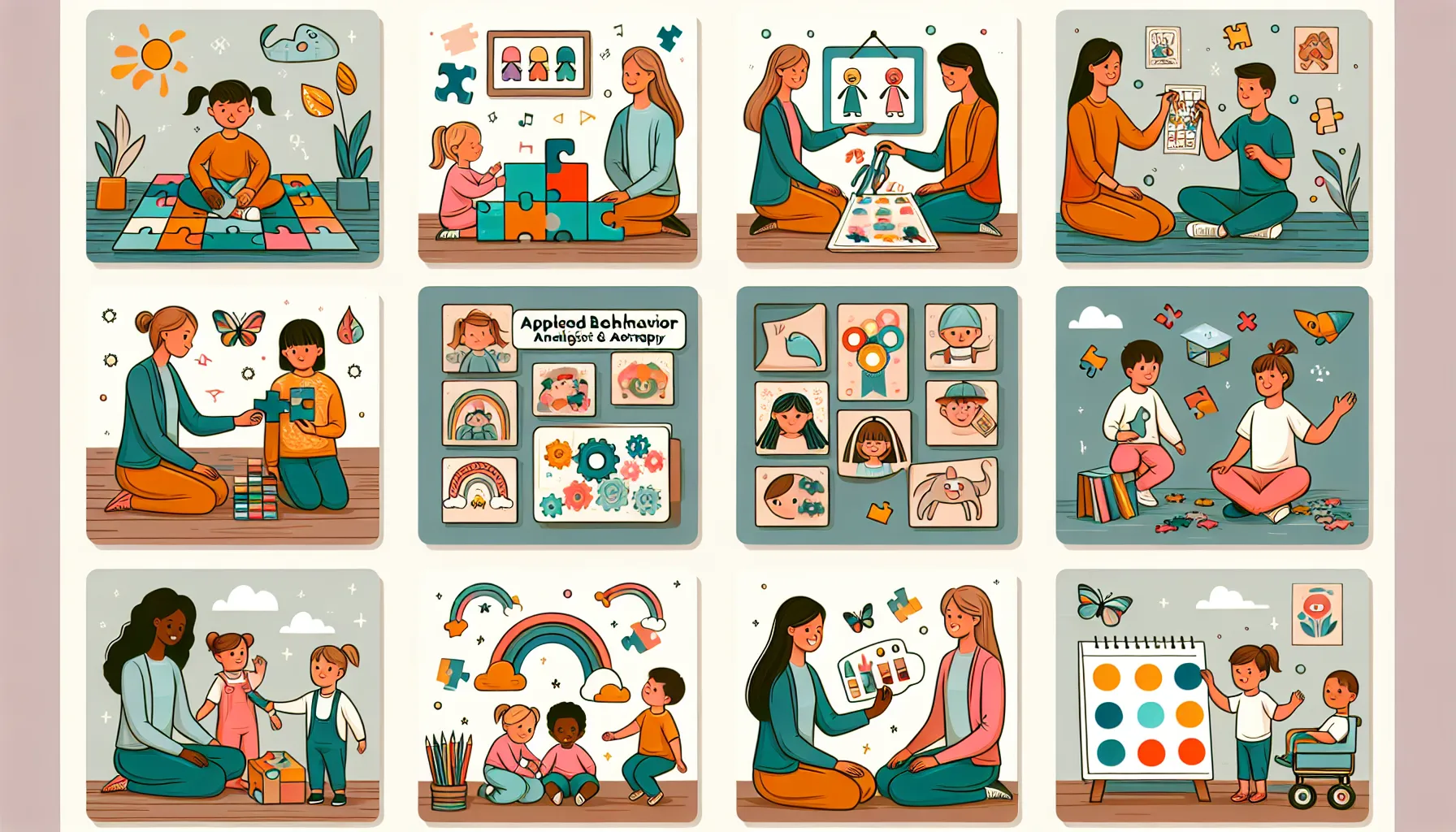





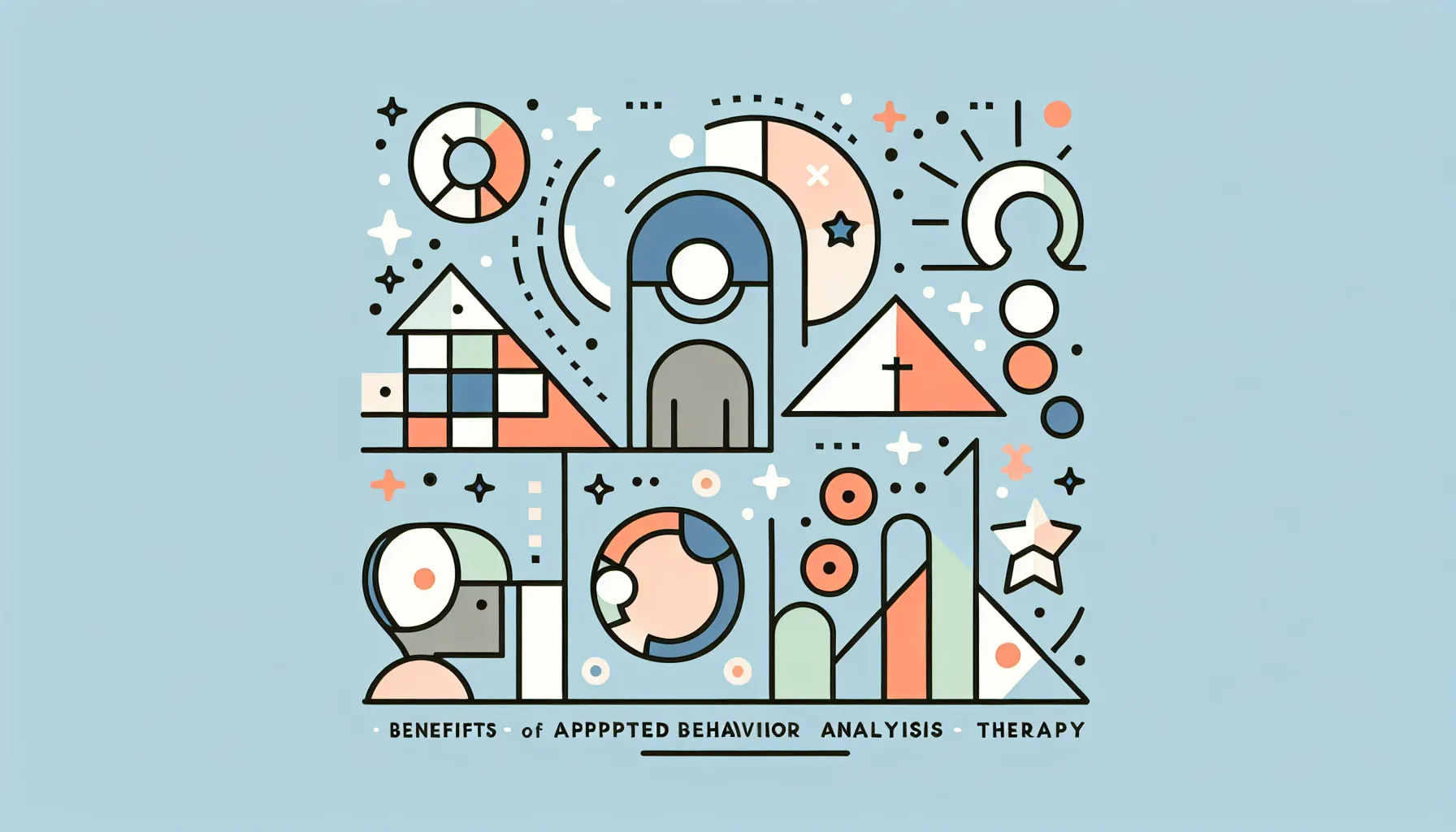






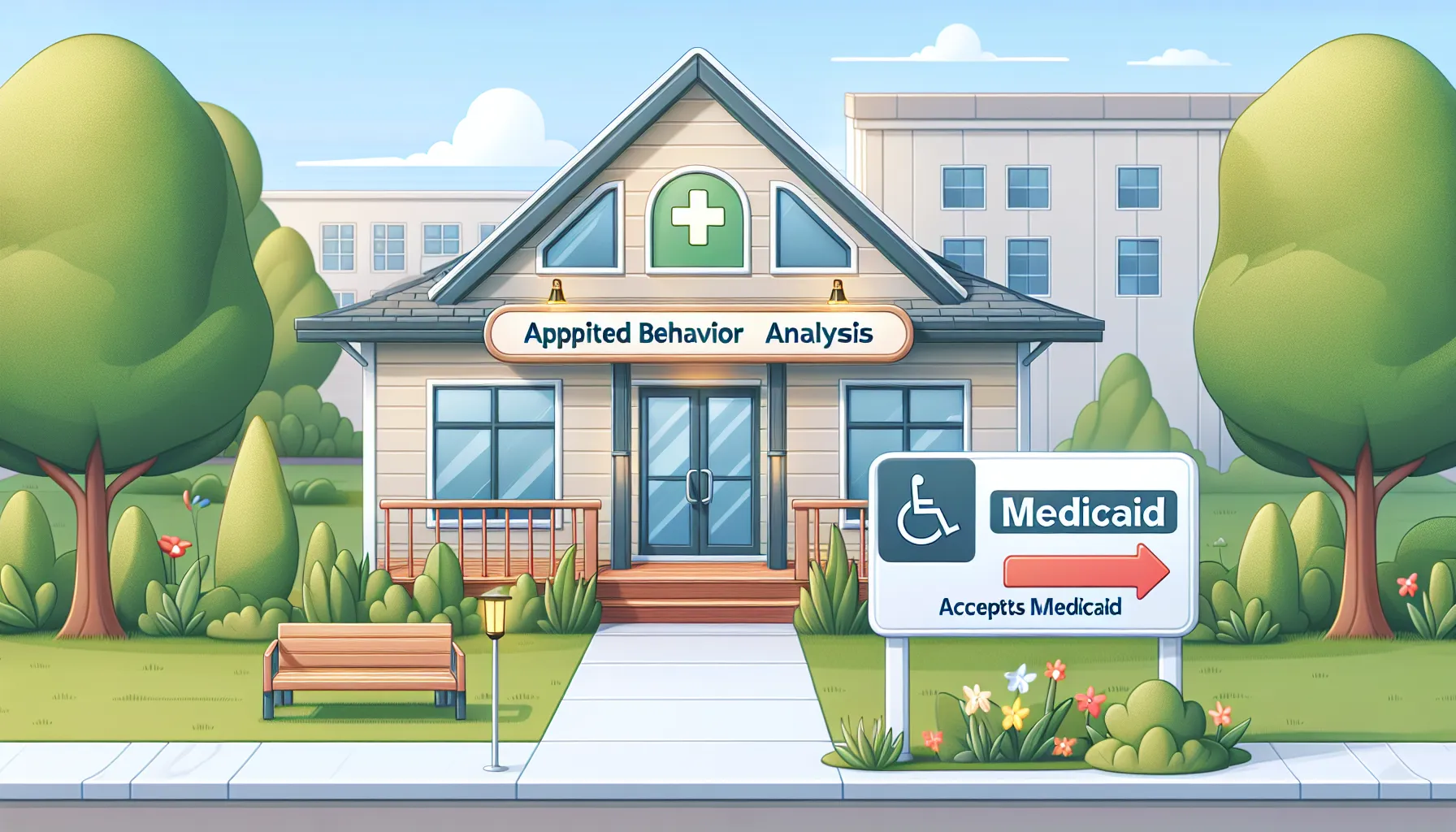




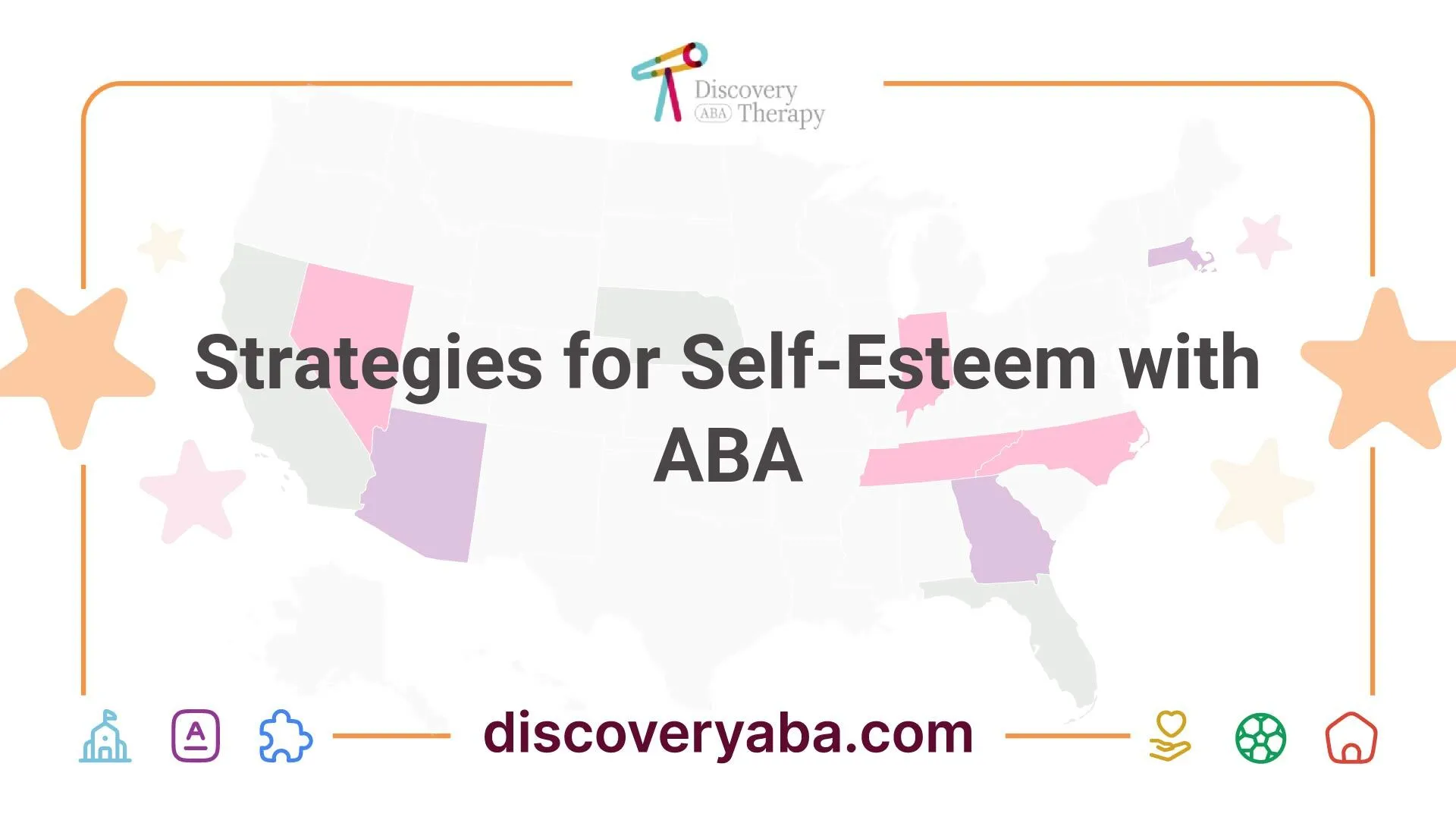




.jpeg)







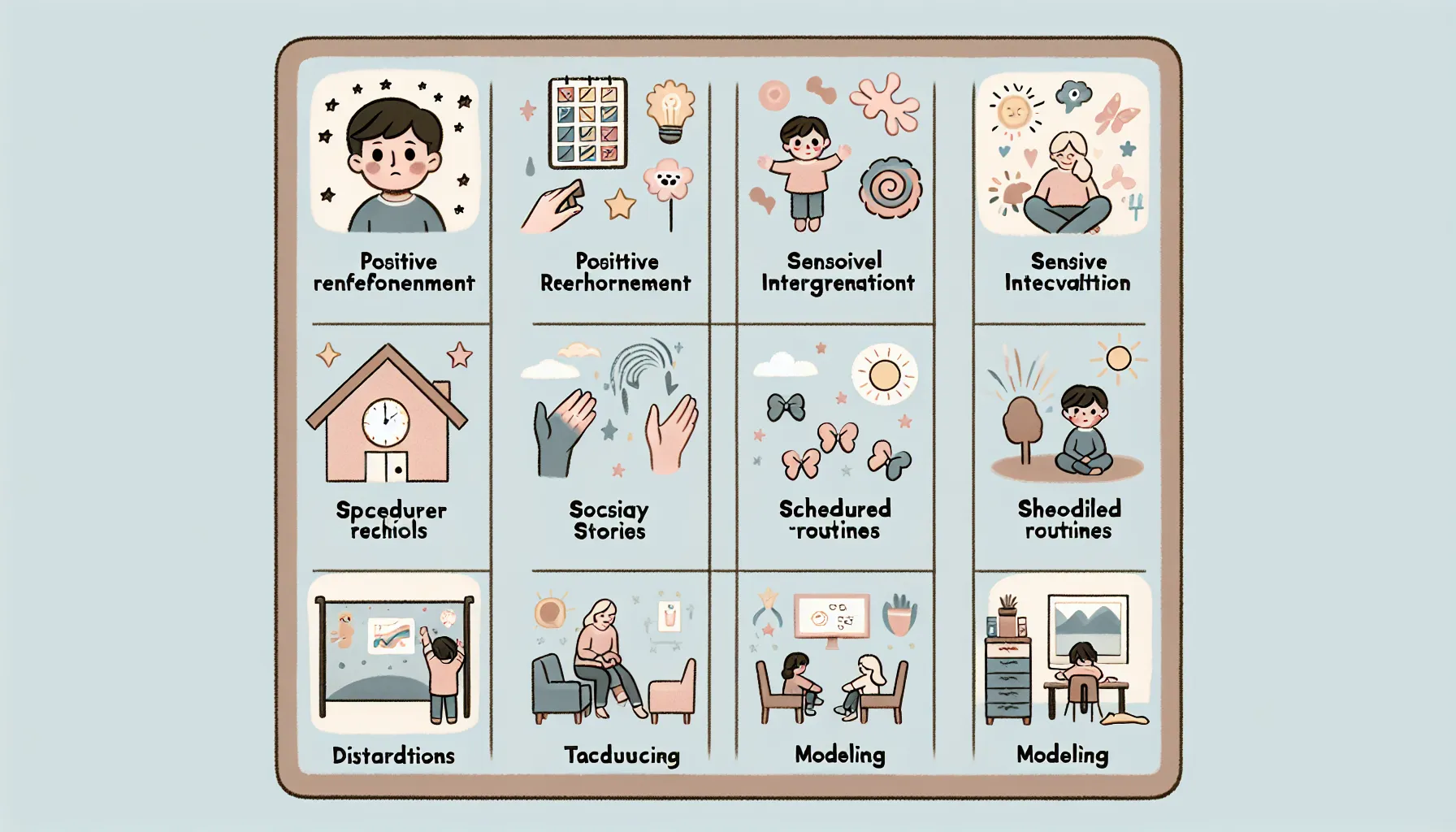

.jpeg)
.jpeg)



.jpeg)




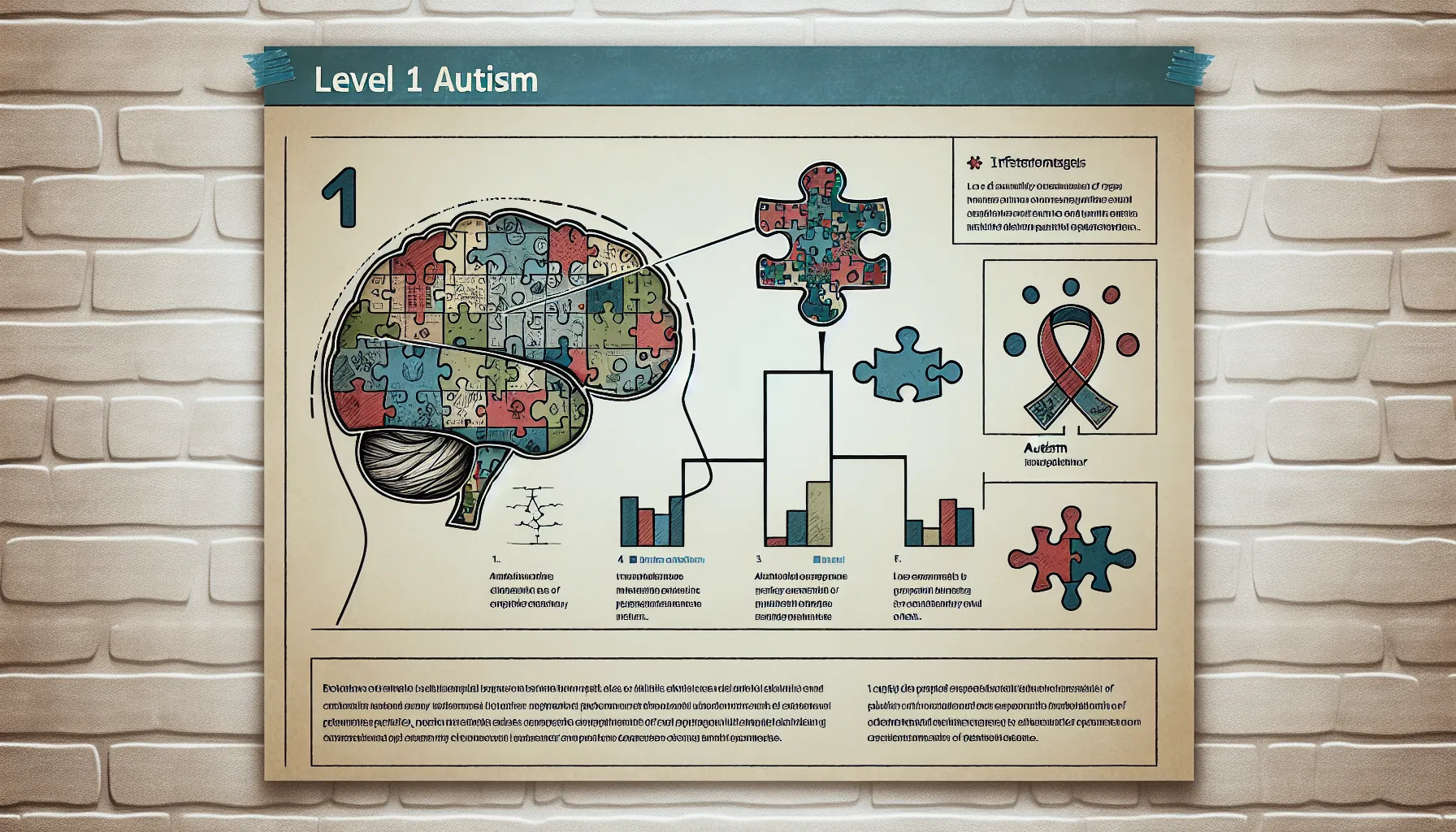











.jpeg)
.jpeg)



.jpeg)
.jpeg)




